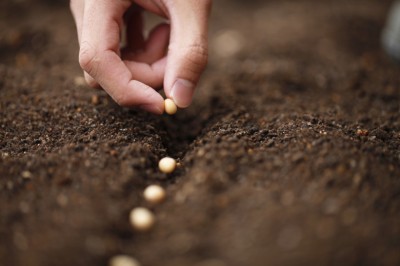In one of my early years of gardening, I made a rookie mistake. I planted leaf lettuce — a lot of leaf lettuce. When those first early tender leaves started to appear out of the ground, fresh salad was a delightful treat.
But soon the lettuce was full on – and try as we might, we couldn’t pick or eat it fast enough! If I had better understood succession planting back then, we still could have had a steady supply without the rush to consume the lettuce before it turned bitter.
What is succession planting? Simply put, it is planting several crops in such a manner so that you’ll always have a steady harvest. This is an important part of planning your garden. Also, by having plantings of certain crops over time and intervals, you’ll reduce your chance of crop failure should you have an unexpected frost, infestation, etc.
There are three main methods of succession planting.
The first is to plant multiple varieties of the same crop which all have different maturity timeframes. This is convenient because it allows you to get all your planting done at once. The drawback to this method: It will require you to have a much larger garden.
The second method is to plant the same variety in intervals over time. Naturally, this means you’re going to have to spend more time working your garden, but it also means that you can get away with having a smaller plot because you can pull up old plants to replace them with new ones. This is called the “interval” method.
The Best Source For Non-GMO Heirloom Seeds Is Right Here!
The final method is planting different crops in succession in the same space one after another. For example, you can plant cool weather crops in early spring such as lettuce, green onion, peas, radishes, etc., followed by warm weather crops in late spring/early summer such as peppers, tomatoes, and zucchini, followed again by cool weather crops as you go into August. This method takes the most planning, but it can also be the most rewarding in terms of the amount and variety of produce that you will get out of one area.
Planning Succession Planting
Beginning the practice of succession planting in your garden is going to require a bit of planning on your part. Not only will you have to prepare your regular plan of where each crop is going to be located in your garden, but you’ll also have to figure out how much empty space (if using the interval method) you’ll need to leave.
You’ll also need to do a bit of research on days to maturity for each crop and figure out how far apart you’ll want to do your plantings.
This can start to get complicated, however, if you don’t have some tools to help. If you are planting a lot of different crops, consider using a chart, calendar or even a spreadsheet to help you keep track of everything. If you’re technologically inclined, you may even want to find an app that you can program to send you reminders.
While some people confuse succession planting with crop rotation, it is important to note that it is not the same thing. Crop rotation is the practice of moving crops around in successive years in order to help avoid plant diseases and soil nutrient depletion.
Plant Maturity Times
As mentioned earlier, one of the keys to successful succession planting is knowing the maturity times for various crops that you intend to plant. You should time your plantings according to the “picking window” – or the time in which the plant at its peak production.
New Natural Fertilizer Doubles Garden Production!
While you will still have to do a bit of research on the specific variety that you intend to plant, here are some guidelines:
- Green beans – plant successively every 10 days.
- Beets – plant every 14 days.
- Cucumbers – every three weeks.
- Kale and collards – every three weeks.
- Lettuce – if growing to full size, plant every 10-14 days. Shorten this time frame to 7-10 days if picking baby lettuce.
- Melons – every three weeks.
- Radish – every 7 days.
- Spinach – every 7 days
- Zucchini – every six weeks.
If your garden contains herbs, it is also a good idea to practice succession planting with these as well. Herbs such as basil and cilantro will bolt quickly, especially in hotter weather. And if you enjoy having flowers amongst your veggies, succession planting of these will help to ensure that you can enjoy their beautiful blooms a little longer.
While succession planting definitely takes a little more work and planning than simply planting your crops and being done with it, the rewards of having a more bountiful harvest throughout the season are well worth it.
Most gardeners will probably agree that one of the greatest joys of gardening is enjoying the fruits (or rather the veggies) or their labor. Succession planting is a way to increase this joy.
What are your favorite vegetables to use in succession planting? Share your tips in the section below:
Every Year Gardeners Make This Crazy Mistake. Read More Here.
 Off The Grid News Better Ideas For Off The Grid Living
Off The Grid News Better Ideas For Off The Grid Living





